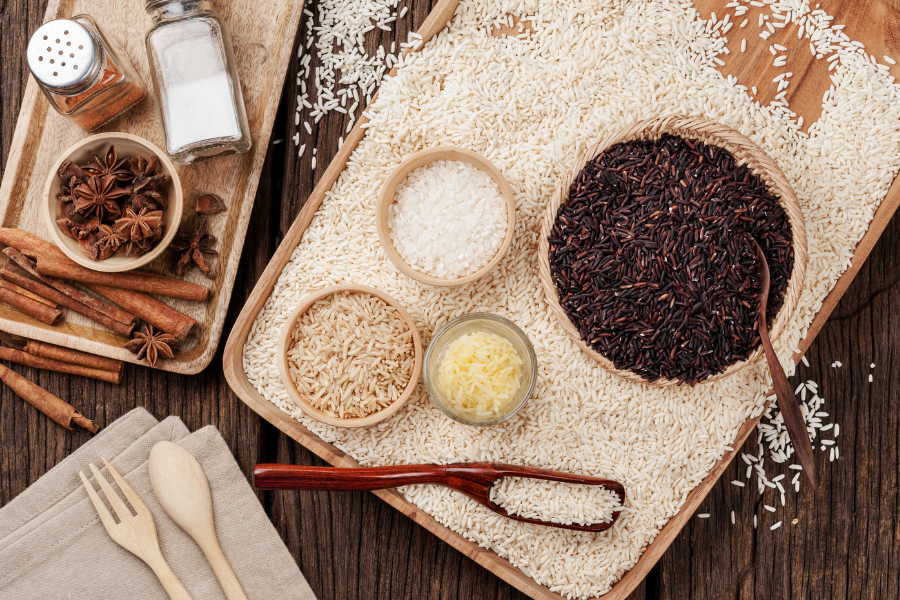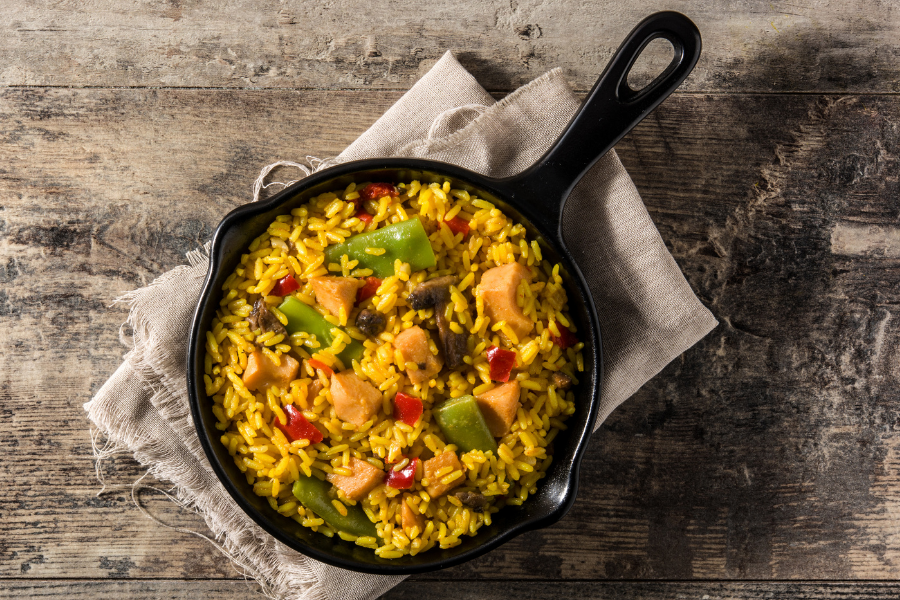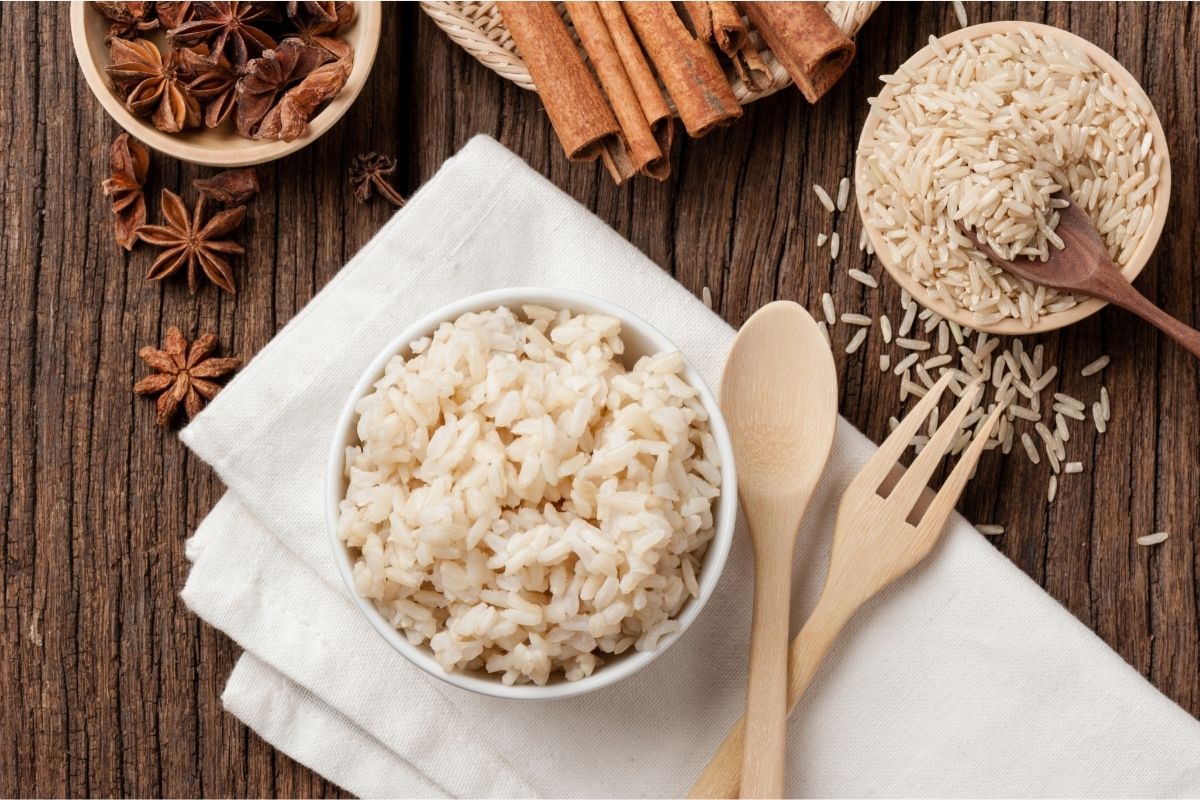Avoid The Hardships Of Cooking Rice
Rice is a staple ingredient that is important in several cultures and cuisines. Rice cookers can help you cook fluffy rice, but if you don’t have one, don’t worry! You can still make perfect fluffy rice without a rice cooker. A lot of people make rice all the time and have never used a rice cooker once.
All you need is water, a stovetop, and a pot with a lid, all things you probably have somewhere around your kitchen. If you’re not that confident using a stove, we’ve also included guidelines on cooking rice in the microwave.
After reading this article, you won’t have to think about buying an expensive rice cooker ever again!
What Rice Can Be Cooked On The Stove?
You can use this rice method for most kinds of rice, including long-grain, medium-grain, basmati, and jasmine rice.
You can also use it for short-grain rice, except for sushi rice.
Don’t use this method for wild rice, quinoa, risotto rice, or sushi rice.
Different Kinds Of Rice

In most cases, sticker rice will have a shorter grain, while longer grains will be less sticky. Sticky rice grains will stick to each other instead of falling into little pieces. This is ideal for sushi or using chopsticks.
Longer grain rice isn’t sticky, such as basmati, which has the lowest amount of stickiness. Indian food is typically eaten with the hands or with a spoon, while sticky sushi rice is eaten with chopsticks.
How Much Water And Rice To Use
It can be tricky knowing exactly how much water to use when boiling rice. In most cases, you’ll need 1.5 cups of water to cook a cup of rice.
However, if you plan on using a different method, this ratio changes. If you are cooking rice in the microwave, you’ll need 2 cups of water for every cup of rice.
This ratio is ideal if you don’t rinse your rice before. If you rinse your rice beforehand, remove 2 tablespoons of water for every cup of rice.
How To Cook Perfect Rice: Stove Method

Here are the steps to follow to cook rice on the stove.
- Add a cup of rice to 1 and a half cups of water in a saucepan. Heat at a medium-high temperature and bring the water to a boil. Don’t place the lid on just yet.
- Once the water is boiling, turn the heat down to low, then cover with a lid. Set a timer for 13 minutes.
- Once 13 minutes are over, take the saucepan off of the heat. DO NOT REMOVE THE LID! Leave the rice in the pan for 10 minutes. Once done, use a rice paddle to fluff it up.
There you have it! Perfectly cooked fluffy rice!
We’ll cover the microwave method in more detail below, but the stovetop method will give you better grains. The rice will cook nicely without turning slimy, but the grains will still have a nice texture to them.
How To Cook Perfect Rice: Microwave Method
The microwave cooking rice method is good for when you need rice quickly, but it won’t cook as evenly as it would on a stovetop. Here are the steps to follow to cook rice in the microwave.
- Before we start, make sure you have a microwave-proof container. Make sure it’s quite tall as the water will rise a lot.
- Add a cup of rice and 2 cups of boiling water to the container. Check that the container is 4 times taller than the water level.
- Don’t cover the container, then microwave on high for 12 minutes.
- Take the container out of the microwave, taking care to avoid burning your hands. Cover the container immediately with a plate or lid. Leave for 10 minutes.
- Remove the cover, then fluff the rice up with a spatula.
You should have a bowl of reasonably cooked rice!
Tips On The Microwave Method
Try adding boiling water to the rice before microwaving. Microwaves tend to cook ingredients from the outside first. Boiling water helps all of the rice cook equally.
Using a round container instead of a square or rectangular one can help you cook rice evenly.
Microwaving rice takes the same amount of time as cooking rice on the stove, but it can be less stressful. Despite this, microwave rice won’t taste as nice as stovetop rice. Even if you try the tips above, the grains won’t cook as evenly.
This isn’t a huge difference, but if you’re meticulous about producing perfectly cooked rice, you may prefer to skip the microwave altogether. Nevertheless, it’s always a good idea to know how to cook rice in the microwave! You never know where it might come in handy.

What Not To Do When Cooking Rice
When people get rice wrong, it’s usually due to one reason: using too much water! A lot of recipes state to use 2 cups of water for every cup of rice. This will make the rice too soft, creating a mushy mess instead of individually cooked grains.
Rinsing your rice is also a factor here, as the grains start absorbing water before they’re placed on the stove. If you use the recommended two cups of water with your rinsed rice, you may be using 2 1/4 cups of water instead. This will make your rice gummy and slimy.
The best water to rice ratio is 1 and a half cups for every cup of rice. If you do prefer to wash your rice first, take two tablespoons of water out of the pan. This may seem like a small amount, but it should avoid your rice absorbing too much water.
Conclusion
You don’t need to spend money on a rice cooker to cook rice well! A stovetop can do the same job for much less. The stovetop method above should result in well-cooked, fluffy rice each time. The microwave method can still create decent rice, but it won’t cook as evenly as rice on a stovetop.
Remember the water to rice ratio! Only use 1 and a half cups of water for every cup of rice. Any more than this will create soft and mushy grains. If you do choose to rinse your rice, take away two tablespoons of water from the pan before cooking. This will prevent the grains from absorbing too much water.
Hungry for more? Join our cooking clan here for exclusive content, giveaways, and delicious treats!!
We always want to be transparent and honest about our article content. From time to time, we may link to products and services that compensate us for the referral. This does not affect your cost, but it does help us fund future content for this site.
